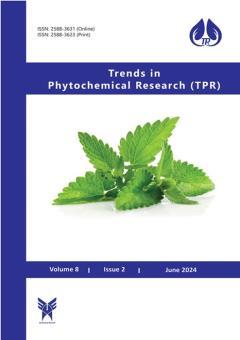-
-
-
Open Access Article
1 - Ethnopharmacology, phytochemistry and biological activities of selected African species of the genus Ficus
Olaoluwa Olaoluwa Olayombo Taiwo Lutfun Nahar Satyajit Sarker -
Open Access Article
2 - ‘Helencha’ (Enhydra fluctuans Lour.): A brief overview
Lutfun Nahar Satyajit D. Sarker -
Open Access Article
3 - ‘Thankuni’ [Centella asiatica (L.) Urban]: When food is medicine
Lutfun Nahar Satyajit D. Sarker -
Open Access Article
4 - ‘Gandho badali’ (Paederia foetida L.): Horrendous smell, but tremendous medicinal value
Lutfun Nahar Satyajit D. Sarker
List of Articles Satyajit D. Sarker
-
The rights to this website are owned by the Raimag Press Management System.
Copyright © 2021-2024


